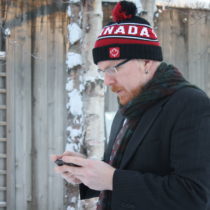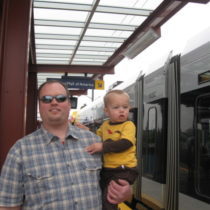Landscape Architecture for Landscape Architects › Forums › PLANTS & HORTICULTURE › Heated Sidewalks and Street Trees
- This topic has 1 reply, 12 voices, and was last updated 14 years, 9 months ago by
Dennis J. Jarrard, PLA, CLARB.
-
AuthorPosts
-
February 24, 2011 at 4:53 pm #164662
 Peter BriggsParticipant
Peter BriggsParticipantWe have a fair number. Private and public facilities (i.e. our new convention center in Anchorage). They have also heated street sections and intersection crossings. There are some issues… but that’s probably another topic stream.
February 24, 2011 at 5:57 pm #164661 Jordan LockmanParticipant
Jordan LockmanParticipantThe ones I have seen most often are steam heated by a garbage burner or coal plant.
February 25, 2011 at 3:14 pm #164660Mike G
ParticipantThomas, In regards to your comments on gov’t involvement… Couldn’t agree more. I think we probably share very similar political viewpoints. Sometimes getting to them is the difficult part.
March 1, 2011 at 8:16 pm #164659 Christopher MertlParticipant
Christopher MertlParticipantIn Juneau, Alaska we recently designed a heated pedestrian plaza in front of a transit center with landscaping. My research indicated that you need coordination with the mechanical/electrical to understand the heat requirements/output based on degree cooling days. In areas that the temperature only needs to be raised a few degrees to get melting, these systems have little negative affect on the pits, especially if insultated. Areas that require significant heating due to extreme cold temeratures will transfer heat to the pits even with insulation. Insulated pits will take longer to freeze naturally and adding a heat source slows the freezing process even more. Keep in mind that the most sensitive roots are near the surface of your soil. In the end I kept the trees out of the heating zone to ensure the melt system did not affect the trees.
I contacted Jim Urban (LA and arborist) during design and he indicated that there was little research on this but he agreed that keeping trees out of the heating area was the best course of action for the trees.
One item related to snow melt systems that is often overlooked is where does the melt water go? Once the water moves off the heated surface it will quickly refreeze once it makes contact with a cold surface and cause glaciation.
March 10, 2011 at 3:47 am #164658 Melinda W. PolitesParticipant
Melinda W. PolitesParticipantWhen you mess with Mother Nature you always lose. Heated sidewalks???? really? Will be interested to see how it all works out.
March 10, 2011 at 3:13 pm #164657Tanya Olson
ParticipantHa! Clearly you’ve never dealt with MN winter snow removal! MN winters are the reason my southern friends who toyed briefly with living in the north country fled back to south as soon as possible! haha!
I feel compelled to explain this northern practice……My understanding is that the sidewalks are (or were) heated as a byproduct of the downtown-wide underground steam building heating system. They’ve been heated for at least 20+ years – maybe dating all the way back to the Halprin design of Nicollet Mall. They aren’t heated in the way that radiant floor heat is heated – that is they’re not warm, they’re just warm enough to melt thin layers of snow and ice to provide an ice-free sidewalk. For nothern cities things like heated sidewalks and skywalks help keep the downtowns alive (and navigable) during the long 6 months of winter.
I think its an ingenious use of an existing utility and never appeared any more detrimental than urban planting already is to the few downtown trees that are planted in tree grates along the heated sidewalks.
-
AuthorPosts
- You must be logged in to reply to this topic.


